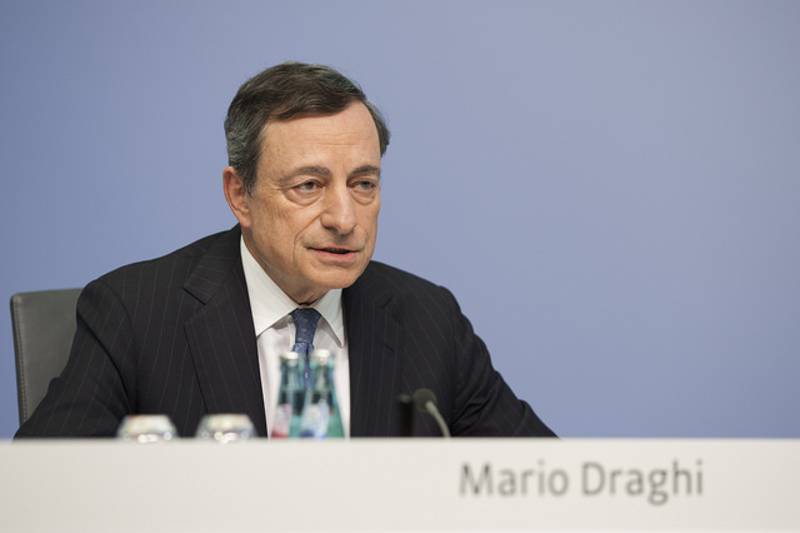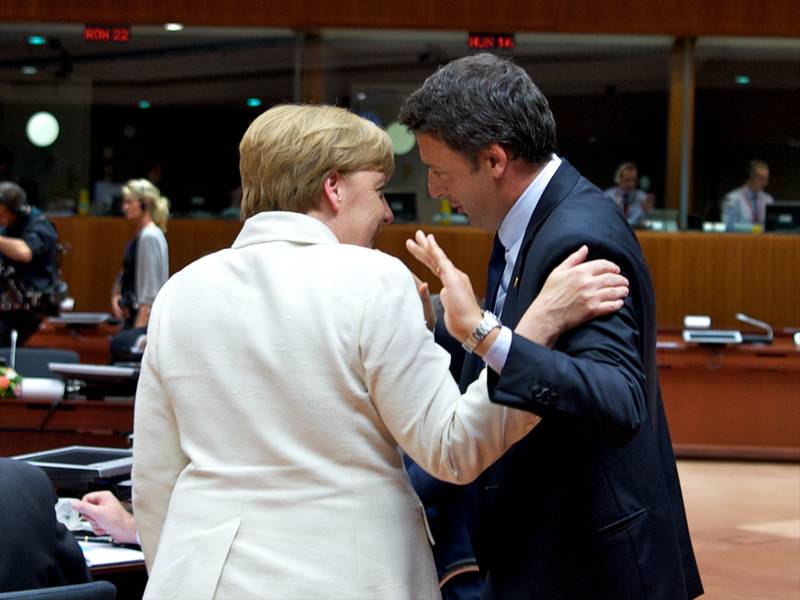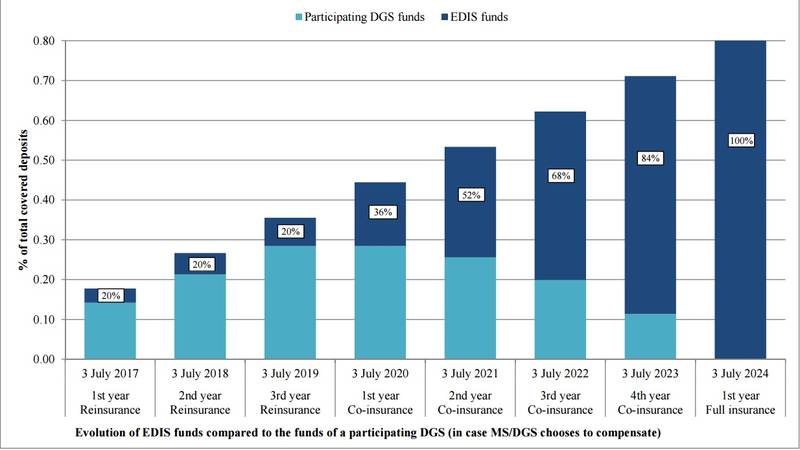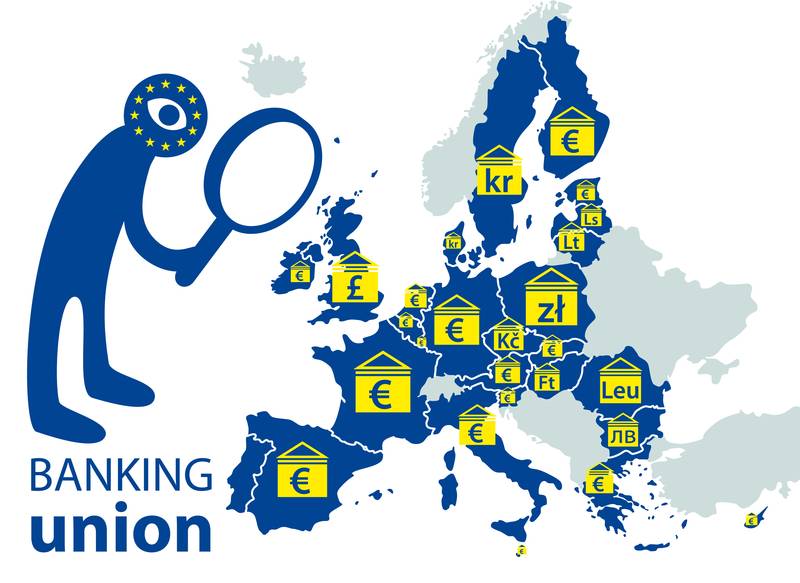Brexit Awoke an Echo of the Euro Area Crisis
Adelina Marini, July 26, 2016
 In the first days following the June 23 referendum in Great Britain, in which voters decided that their country should leave the European Union, economic data showed the presence of a far stronger economic shock for the United Kingdom, than for the EU. A month after the publishing of the results of the vote, international analysts admit they are unable to make a credible forecast. The International Monetary Fund published, following the referendum, an analysis, in which it considers three scenarios, but generally states that it is still too difficult to make an exact forecast. From a macroeconomic viewpoint, the Brexit means “a substantial increase in economic, political, and institutional uncertainty, which is projected to have negative macroeconomic consequences, especially in advanced European economies”, believes the Fund.
In the first days following the June 23 referendum in Great Britain, in which voters decided that their country should leave the European Union, economic data showed the presence of a far stronger economic shock for the United Kingdom, than for the EU. A month after the publishing of the results of the vote, international analysts admit they are unable to make a credible forecast. The International Monetary Fund published, following the referendum, an analysis, in which it considers three scenarios, but generally states that it is still too difficult to make an exact forecast. From a macroeconomic viewpoint, the Brexit means “a substantial increase in economic, political, and institutional uncertainty, which is projected to have negative macroeconomic consequences, especially in advanced European economies”, believes the Fund.
It is still difficult to quantify the potential effects, for Great Britain has not yet triggered Article 50 of the Treaty of the EU, which will be considered an official notification of wishing to leave the Union and will mark the start of negotiations. There are some uncertainties stemming also from the lack of information on how long will negotiations last and what agreement will emerge after they finish. Out of all the advanced economies, the United Kingdom is suffering the greatest downward revision of the economic growth forecast – 0.2 percentage points for this year and almost 1 percentage point for 2017. The Fund’s forecast for the economic growth in the euro area for this year is expected to be a little higher than what was expected in April, due to the surprisingly good indicators in the beginning of the year. For next year, however, the Fund revised its forecast down by 0.2 percentage points.
The European Commission sees the situation a little differently. According to the post-Brexit analysis of the EC, growth in the euro area is expected to moderate this year (1.5%-1.6%) and next year (1.3%-1.5%). This means losing one quarter to one half of a percent of Gross Domestic Product by 2017. This is the soft scenario, which will unfold if the uncertainty around the activation of Article 50 and the start of negotiations is brief. The severe scenario provides for more serious shocks, which will raise financing costs.
The European Central Bank discussed the subject at the last meeting before the summer vacation of the Governing Council last week, but is being cautious. The bank’s assessment is that financial markets in the euro area have managed very well in the peak of uncertainty. Moreover, ECB boss Marion Draghi stated, that what was done over the last few years in the euro area in response to the crisis, has to a great extent saved the currency club from large shocks after the referendum. This does in no way mean, however, that everything in the euro area is all flowers.
The zone of the common currency has not yet solved several of its own serious problems like the completion of the banking union, clearing of the legacy of the 2009 crisis, the long-overdue reforms. In the days before the meeting of the GC of the ECB on July 21, expectations were that Mr Draghi would send out a strong appeal to countries of the euro area for the implementation of structural reforms. He touched on the subject, but not with the force that was expected. In his opinion, the result of the referendum, geopolitical uncertainty, economic perspectives, faced by emerging markets, and the slow implementation of structural reforms all together create a serious risk for the euro area. Draghi appealed for a “substantial” step up of the speed of implementation of structural reforms, especially those, which are aimed at lowering structural unemployment and increasing productivity. He once again appealed for a looser fiscal policy, but warned that in any case it needs to be fully compliant with the Stability and Growth Pact rules.
A forgotten unsolved issue
 While waiting for autumn, when institutions hope to have more information, so that they can make more accurate forecasts on the consequences of the Brexit, the euro area is threatened by a more serious problem. Word is of non-performing loans in Italy, which have a greater potential of creating trouble for the euro area than the Brexit. Formally, it is exactly the result of the referendum in Great Britain that threw light on this issue, but it is not the reason for it. Currently, Italy needs to solve the case of the Monte dei Paschi di Siena bank, whose equities got heavily hit after the Brexit. The bank has a huge portfolio of bad loans and at the moment there is search under way for the best possible solution for its recapitalisation, without violating the new European rules in the banking union in the process. European institutions and the Italian government have adamantly stressed that this is not a return of the banking crisis in the euro area, but rather a legacy problem of the crisis, that has not been resolved when it was supposed to.
While waiting for autumn, when institutions hope to have more information, so that they can make more accurate forecasts on the consequences of the Brexit, the euro area is threatened by a more serious problem. Word is of non-performing loans in Italy, which have a greater potential of creating trouble for the euro area than the Brexit. Formally, it is exactly the result of the referendum in Great Britain that threw light on this issue, but it is not the reason for it. Currently, Italy needs to solve the case of the Monte dei Paschi di Siena bank, whose equities got heavily hit after the Brexit. The bank has a huge portfolio of bad loans and at the moment there is search under way for the best possible solution for its recapitalisation, without violating the new European rules in the banking union in the process. European institutions and the Italian government have adamantly stressed that this is not a return of the banking crisis in the euro area, but rather a legacy problem of the crisis, that has not been resolved when it was supposed to.
Mario Draghi’s explanation is that the most affected are banks in the euro area with a large portion of non-performing loans. The problem with these banks is not that they are facing insolvency, but that their profitability perspectives are bad. This, in turn, leads to an obstruction of crediting and thus to hobbling economic growth. Regarding the possibilities of insolvency, Mario Draghi explained that the current situation is way better than it was at the beginning of the euro area crisis. Capital equity tier 1 in 2012 was 9% and now it is 13%. There is new regulation, supervision, harmonised standards for classification of non-performing loans, and last but not least an accommodative monetary policy. The ECB has long been warning about the problem with non-performing loans, and in the case of Italy in particular there was a recommendation in this direction present in the European semester each consecutive year (more on this year’s European semester and the Italian case here). This problem, however, is solved slowly, explained Mario Draghi last week.
In order to solve it, first of all the maintenance of consistent supervision is necessary. The European Banking Authority (EBA) will publish the results of its regular stress-test on Friday (July 29). Secondly, continued Mario Draghi, it is necessary to develop a well-functioning non-performing loans market, and finally, government effort is required, with Mario Draghi not excluding the participation of public funds, but passed the ball to the European Commission, which needs to make the decision on that. It is not just the Commission that needs to make such a decision, for several member states, led by Germany, are strictly opposed to making any more exceptions for anyone, be it a large economy like Italy. The demand of these states is that a solution is sought in the existing legal framework. At this stage the Eurogroup and the Council prefer not to comment on the subject, for they place it entirely in a national context.
Mario Draghi explained in detail last week that it is necessary to create a legal framework for trading and sale of non-performing loans. There are already steps made in this direction by Italy, he said. More is needed, however. According to data by the EBA of July this year, Italy does not have the largest portion of non-performing loans in the euro area. Having the greatest ratio of this type of loans is Cyprus (49%), followed by Greece (47%). The Italian ratio is 17%. The average ratio of non-performing loans for March was 5.7%. In the EU this ratio continues to be three times larger than in the other global jurisdictions. According to the Authority, there are structural impediments to the resolving of the issue with these loans, among which are legal systems, the duration of court proceedings and tax regimes.
Differing from ECB recommendations, the EBA proposes several other solutions for dealing with the problem. First of all, the Authority suggests improving provisions and the management of non-performing loans. Second comes solving the problem in legal systems, and third comes the creation of a secondary market for trading bad loans. The Authority also suggests  that asset management companies (non-performing banks) are created, with or without participation of public funds.
that asset management companies (non-performing banks) are created, with or without participation of public funds.
What makes the Italian situation more complex is that besides the great accumulation of non-performing loans, the country has one of the highest levels of public debt - 132.7% of GDP in 2015. Another problem is that the country is in a process of implementation of radical reforms, which are costing non-compliance with the fiscal rules and the agreed flexibility and will probably have a high political cost to Prime Minister Matteo Renzi and his party. Currently, the Italian banking problem is just an echo of the passing crisis. It does, however, remind that although much has been accomplished in the euro area over the last few years, much more remains unfinished.
Finding the solution to the Italian case will be a test for the confidence in the EU’s legal and institutional framework, as well as of its will to keep such problems away from the political context. The second one will prove the greater challenge, considering the upcoming referendum in Italy this autumn on a key political reform in the country. There are no reasons for alarm so far, but autumn is still far away and sentiments all over Europe are Ferragosto.
Translated by Stanimir Stoev
 Klaus Regling | © Council of the EU
Klaus Regling | © Council of the EU Mario Centeno | © Council of the EU
Mario Centeno | © Council of the EU Mario Centeno | © Council of the EU
Mario Centeno | © Council of the EU Elke Koenig | © European Commission
Elke Koenig | © European Commission | © European Commission
| © European Commission David Davis | © European Commission
David Davis | © European Commission Angela Merkel | © Council of the EU
Angela Merkel | © Council of the EU Michel Barnier, Nigel Farage | © European Parliament
Michel Barnier, Nigel Farage | © European Parliament | © European Parliament
| © European Parliament